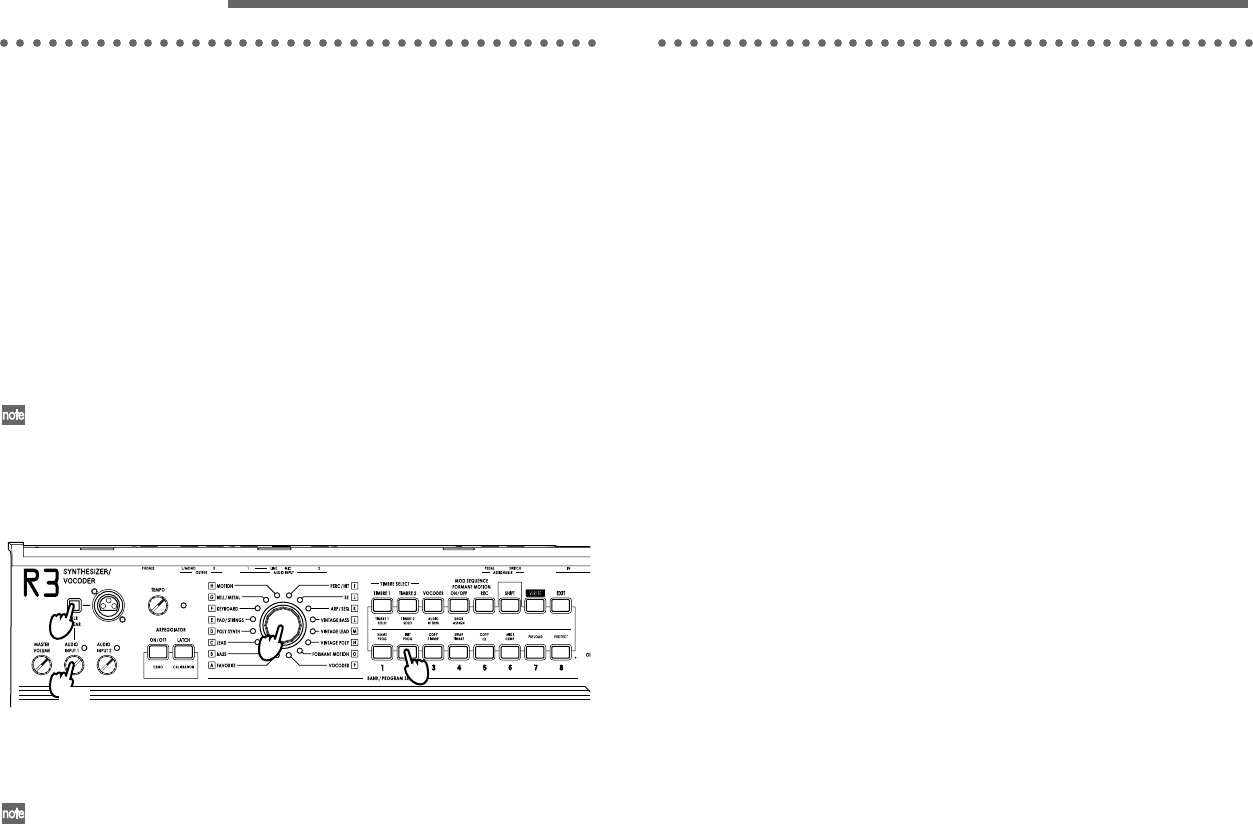
14
Vocoder programs
2. Modifying the sound
Just as with synth programs, you can modify the sound of a vocoder
program by turning the knobs [1]–[4], by moving the [PITCH] and
[MOD] wheels, by switching octaves, and by how you play the key-
board. Try using some of these methods to alter the selected program, as
described on the preceding pages.
With the factory preloaded data, the Performance Edit functions for
knobs [1]-[4] are generally set to the following parameters.
Vocoder :
Knob [1]: Formant Offset (FcOffset)
Knob [2]: Vocoder Resonance (Vcd Reso)
Knob [3]: Envelope Follower Sensitivity (E.F. Sens)
Knob [4]: Formant Motion Data Set Number (Frmnt No)
1. Playing a vocoder program
A vocoder applies the spectral character of an externally-input voice (the
“modulator”) to an oscillator or other sound (the “carrier”), and outputs
the result. In the most popular use of a vocoder, you can speak or sing
into a mic and play chords on the keyboard, to create the impression that
an instrument is speaking or singing. You can also create a variety of
interesting effects by using audio signals other than a human voice (such
as rhythm sounds).
1 Turn the [AUDIO INPUT 1] knob all the way to the left, and set the
[MIC] switch to XLR.
2
Connect the included mic to the [MIC] connector (☞p.8).
3
Select a vocoder program from bank P (VOCODER).
The [VOCODER] button will light.
With the factory settings, bank P (VOCODER) contains vocoder
programs.
4
Sing or talk into the mic, and turn the [AUDIO INPUT 1] knob up (to
the right) as far as you can, without allowing the AUDIO INPUT 1 LED
to light red.
3
3
1
1, 4
5
While singing or talking into the mic, play the keyboard.
Try speaking or singing different words, and play various chords to
hear the vocoder effect.
The Formant Motion programs (Bank O) can produce vocoder effect
by simply by playing the keyboard; no vocal input is required. These
programs use stored formant data to create the vocoder effect.


















